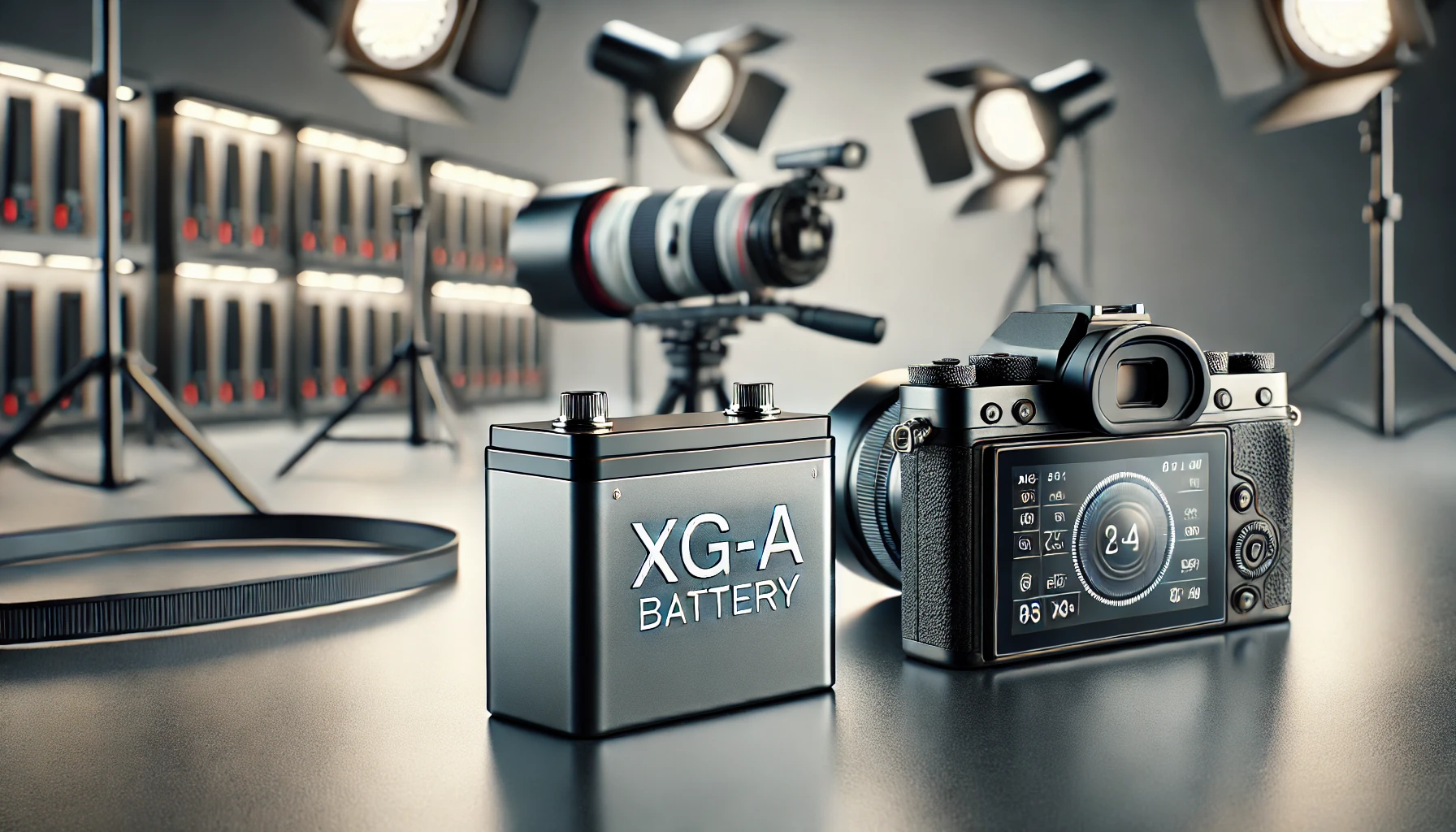Technology
What is Linuxia? Understanding the Next-Generation Open-Source Operating System
In the rapidly evolving world of technology, Linuxia has emerged as a game-changing open-source operating system, promising to redefine the landscape of computing. Building on the legacy of the Linux kernel, Linuxia has been crafted to meet the demands of modern computing, offering enhanced performance, robust security, and a vibrant community-driven development model. Whether you’re a developer, system administrator, or just a tech enthusiast, understanding Linuxia is crucial to staying ahead in the digital world.
Contents
The Evolution of Linuxia

Linuxia traces its roots back to the early 1990s, when Linus Torvalds first developed the Linux kernel as an open-source alternative to proprietary operating systems. Over the years, Linux has evolved into various distributions, each tailored to specific needs, from server environments to personal desktops. Linuxia represents the next step in this evolution, offering a highly modular and customizable platform that caters to a wide range of users.
Linuxia stands out for its architecture, which combines the best of traditional Linux systems with cutting-edge innovations. It leverages a modular design, allowing users to choose components that best fit their needs. Whether you’re running Linuxia on a powerful server or a modest personal computer, the system adapts to provide optimal performance.
Core Features of Linuxia

One of Linuxia’s most striking features is its advanced file systems. Linuxia supports a variety of file systems, including ext4 and Btrfs, offering flexibility in how data is stored and managed. The Btrfs file system, for instance, provides snapshotting capabilities, allowing users to create point-in-time copies of their data, which is invaluable for backups and data recovery.
Networking is another area where Linuxia excels. It supports a comprehensive suite of networking protocols, including TCP/IP, UDP, and ICMP, ensuring reliable communication between devices and networks. This makes Linuxia a robust choice for both personal and enterprise-level networking tasks.
Security is a cornerstone of Linuxia’s architecture. The system integrates advanced security features like SELinux (Security-Enhanced Linux) and OpenSSL to protect user data and maintain privacy. These features are complemented by regular security updates, ensuring that the system remains resilient against emerging threats.
Linuxia’s Community and Development Model
The strength of Linuxia lies in its community. Open-source projects thrive on the contributions of a global network of developers, and Linuxia is no exception. The community around Linuxia is not just active but also highly collaborative, fostering an environment where ideas are shared, and innovations are rapidly integrated into the system. This community-driven model ensures that Linuxia is constantly evolving to meet the needs of its users.
Collaboration within the Linuxia community extends beyond development. Users contribute by providing feedback, creating documentation, and even helping to shape the future direction of the project. This inclusive approach has made Linuxia a dynamic and responsive platform, capable of adapting to the ever-changing technological landscape.
Linuxia in the Modern Computing Landscape

In today’s computing environment, where performance, security, and flexibility are paramount, Linuxia offers a compelling solution. Its modular architecture makes it suitable for a wide range of applications, from desktop environments to cloud computing and containerization. The system’s ability to adapt to different hardware configurations, from high-end servers to older machines, further broadens its appeal.
For enterprises, Linuxia provides a reliable and cost-effective alternative to proprietary systems. Its open-source nature means there are no licensing fees, and the robust security features reduce the risk of cyber threats. Additionally, Linuxia’s support for containerization and microservices makes it an excellent choice for modern development workflows, particularly in DevOps environments.
On the desktop, Linuxia offers a user-friendly experience with a variety of distributions tailored to different user needs. Whether you prefer a lightweight system for older hardware or a fully-featured desktop environment with the latest software, Linuxia has a distribution that fits your requirements.
The Future of Linuxia

As technology continues to evolve, so too will Linuxia. The development team is committed to keeping the platform at the forefront of innovation, with ongoing efforts to enhance performance, security, and usability. Future updates are expected to introduce even more advanced features, such as improved support for artificial intelligence and machine learning workloads, as well as better integration with emerging technologies like quantum computing.
The roadmap for Linuxia includes expanding its reach into new markets and use cases. For instance, there is a growing interest in using Linuxia for edge computing, where its lightweight nature and robust networking capabilities make it an ideal choice. Additionally, the development team is exploring ways to make Linuxia more accessible to non-technical users, further broadening its appeal.
Conclusion
Linuxia represents the next generation of open-source operating systems, building on the strengths of its predecessors while introducing new features and innovations. Its modular architecture, robust security, and active community make it a powerful tool for a wide range of users, from individual developers to large enterprises. As we look to the future, Linuxia is poised to continue its growth and remain a key player in the world of computing.
Whether you’re a seasoned Linux user or new to the world of open-source software, Linuxia offers a platform that is both familiar and forward-looking. Embrace Linuxia today and be a part of the future of computing.
Before Ending, I’ve noticed your interest in Our Blog. We have covered the topic “Exploring Amazons GPT44X: A Revolutionary Leap in AI Technology,” which you can explore on our blog.
Post Disclaimer
The information contained in this post is for general information purposes only. The information, including images, is provided by What is Linuxia? Understanding the Next-Generation Open-Source Operating System, and while we endeavor to keep the information accurate, we make no representations or warranties of any kind, express or implied, about the completeness, accuracy, reliability, suitability, or availability with respect to the website or the information, products, services, or related graphics contained on the post for any purpose. Please note that images used in this post may be included for entertainment purposes and do not necessarily represent factual or real-life scenarios.
Technology
What is XG-A Battery? Exploring Its Use in Photography and Advanced Energy Storage

Contents
- 1 Introduction to XG-A Battery
- 2 XG-A Battery in Vintage Photography
- 3 XG-A Battery as Advanced Energy Storage Technology
- 4 Benefits of Advanced XG-A Battery Technology
- 5 Quick Tips for Choosing XG-A Batteries
- 6 Pros and Cons of XG-A Battery Technology
- 7 Key Terms in XG-A Battery Technology
- 8 Highlighted Statistics on Advanced XG-A Battery Technology
- 9 Comparison: S76 Batteries in Photography vs. Advanced XG-A Batteries in Energy Storage
- 10 Frequently Asked Questions
- 11 Conclusion
Introduction to XG-A Battery
The XG-A battery has two main applications: powering vintage Minolta XG-A cameras and representing a new type of advanced energy storage solution. Each context offers unique uses, with the XG-A battery in photography providing essential power for 35mm cameras, while its modern counterpart addresses current demands for high-efficiency energy storage in electronics, electric vehicles, and renewable systems.
XG-A Battery in Vintage Photography
Minolta XG-A Camera Battery Requirements
The Minolta XG-A, a popular 35mm SLR camera from the early 1980s, relies on the S76 battery to power its electronic functions:
- Battery Type: Requires two 1.5V S76 silver oxide cells.
- Functions Powered: The batteries enable the camera’s light meter and electronic shutter functions.
- Availability: S76 batteries are commonly available, suitable for various electronic devices.
For vintage camera enthusiasts, understanding these requirements is crucial to maintaining and using the Minolta XG-A.
XG-A Battery as Advanced Energy Storage Technology
In recent years, XG-A battery has come to denote an advanced type of battery technology designed for modern energy needs. These batteries offer improved energy density, life cycles, and environmental friendliness.
Key Features of Advanced XG-A Batteries
- High Energy Density: Stores more energy in a compact design, ideal for limited-space devices.
- Extended Life Cycle: Withstands more charge-discharge cycles, reducing replacements.
- Fast Charging Capability: Allows for quicker charging times for enhanced convenience.
- Enhanced Safety: Built-in protections against overheating and short circuits.
- Eco-Friendly Materials: Uses more sustainable components, reducing environmental impact.
These features make advanced XG-A batteries appealing for applications that require sustainable, long-lasting power solutions, such as electric vehicles, renewable energy storage, and portable electronics.
Benefits of Advanced XG-A Battery Technology
The modern XG-A battery offers several advantages over traditional lithium-ion batteries:
- Sustainability: Eco-friendly components align with global sustainability goals.
- Efficiency in Power Storage: High energy density ensures powerful, compact solutions.
- Cost Savings Over Time: Extended life cycle reduces the need for frequent battery replacements.
Quick Tips for Choosing XG-A Batteries
- For Photography: Ensure you have S76 batteries on hand if using a Minolta XG-A camera.
- For Energy Storage Needs: Look for XG-A batteries if seeking high-density, eco-friendly options.
- Check Compatibility: Confirm battery type and voltage requirements for your specific device.
Pros and Cons of XG-A Battery Technology
| Pros | Cons |
|---|---|
| High energy density and compact size | Potentially higher initial cost |
| Eco-friendly materials | Limited availability in some markets |
| Long life cycle and reduced replacements | Not fully established in all applications |
Key Terms in XG-A Battery Technology
- Energy Density: The amount of energy stored in a given volume or mass of battery.
- Life Cycle: Number of charge-discharge cycles a battery can endure before performance declines.
- Eco-Friendly Components: Materials and designs that have a lower environmental impact.
Highlighted Statistics on Advanced XG-A Battery Technology
- Energy Density Improvement: Advanced XG-A batteries are estimated to offer up to 30% more energy density compared to lithium-ion batteries.
- Charge-Discharge Cycles: Designed to endure up to 2,000 cycles, extending battery life significantly.
- Carbon Footprint Reduction: Estimated 20% lower carbon emissions in production compared to traditional batteries.
Comparison: S76 Batteries in Photography vs. Advanced XG-A Batteries in Energy Storage
| Feature | S76 Battery (Photography) | Advanced XG-A Battery (Energy Storage) |
|---|---|---|
| Application | Powers vintage Minolta XG-A camera | Used in modern devices and renewable systems |
| Energy Density | Standard for single-use batteries | High, suitable for space-efficient applications |
| Life Cycle | Single-use, replace when depleted | Extended, up to 2,000 cycles |
| Eco-Friendliness | Standard battery disposal required | Uses sustainable materials, lower environmental impact |
Frequently Asked Questions
What is the purpose of an XG-A battery in photography?
The XG-A battery refers to S76 batteries used in Minolta XG-A cameras, powering essential functions like the light meter and shutter.
How is XG-A battery technology different from traditional lithium-ion batteries?
Advanced XG-A batteries offer higher energy density, extended life cycles, and eco-friendly materials, making them more efficient and sustainable.
Are XG-A batteries widely available?
S76 batteries for the Minolta XG-A camera are commonly available, while advanced XG-A energy storage solutions are emerging but may not be as accessible in all markets.
Can I use any other battery in place of an S76 for the Minolta XG-A camera?
It is best to use S76 or equivalent 1.5V silver oxide batteries for optimal performance in Minolta XG-A cameras.
Conclusion
The XG-A battery serves distinct purposes depending on the context. For vintage photography, it powers the Minolta XG-A camera, while in modern energy storage, it represents a next-generation battery solution with high energy density and sustainability benefits. Understanding these applications allows users to appreciate both the historical and contemporary value of the XG-A battery.
Post Disclaimer
The information contained in this post is for general information purposes only. The information, including images, is provided by What is XG-A Battery? Exploring Its Use in Photography and Advanced Energy Storage, and while we endeavor to keep the information accurate, we make no representations or warranties of any kind, express or implied, about the completeness, accuracy, reliability, suitability, or availability with respect to the website or the information, products, services, or related graphics contained on the post for any purpose. Please note that images used in this post may be included for entertainment purposes and do not necessarily represent factual or real-life scenarios.
Technology
What is APL66K? Amazon’s Framework for Voice and Visual Integration

Contents
Introduction
APL66K is an advanced framework developed by Amazon within the Alexa Presentation Language (APL) ecosystem, aimed at enhancing user experiences on Alexa-enabled devices. By integrating voice commands with interactive visual content, APL66K allows developers to create immersive applications on platforms like the Amazon Echo Show and Fire TV. With streamlined syntax for data handling and cross-industry adaptability, APL66K is a key tool in crafting engaging, voice-activated user interfaces.
Key Features of APL66K
1. Streamlined Syntax for Data Processing
APL66K employs an array-based coding style that enables concise and efficient programming. This streamlined syntax is particularly useful for data-intensive tasks common in artificial intelligence (AI) and data science, allowing developers to create complex, responsive applications with less code.
2. Integration of Voice and Visuals
One of APL66K’s standout features is its ability to combine voice commands with dynamic visuals. This integration supports an immersive user experience by providing real-time visual feedback in response to voice interactions, making it especially suitable for Alexa-enabled devices with screens.
3. Cross-Industry Applications
APL66K’s efficient data processing and handling make it adaptable across a variety of industries, including finance, healthcare, and logistics. It’s commonly used for tasks like predictive analytics, inventory management, and data visualization, allowing companies to optimize their operations through interactive, voice-driven applications.
Learning and Implementation
To support developers, Amazon offers comprehensive tutorials and documentation to help integrate APL66K into Alexa skills. This support allows developers to design and implement skills that merge voice interactions with visual elements, contributing to the next generation of user interfaces.
Challenges and Future Prospects
While APL66K is a powerful tool, its unique syntax may pose a learning curve for developers new to array-based coding. However, Amazon’s commitment to expanding APL66K’s capabilities, including potential AI integration and user interface improvements, highlights its long-term value in interactive voice experiences.
Pros and Cons of APL66K
| Pros | Cons |
|---|---|
| Streamlined coding for efficient data processing | Array-based syntax may have a learning curve |
| Enhances user engagement with voice-visual integration | Limited to Alexa-enabled devices with screens |
| Adaptable across various industries | Full capabilities require technical expertise |
| Supported by extensive Amazon documentation and tutorials | Specific to Amazon’s Alexa ecosystem |
Benefits of Using APL66K
- Enhanced User Engagement – By combining voice commands with visual feedback, APL66K enables more immersive experiences on Alexa-enabled devices.
- Efficient Data Handling – Its array-based syntax simplifies complex programming, making it efficient for data-driven applications.
- Cross-Industry Relevance – APL66K supports applications across finance, healthcare, logistics, and other industries, helping optimize processes.
- Continuous Amazon Support – Amazon provides detailed guides and resources, facilitating a smoother learning process for developers.
- Future-Ready Framework – With potential AI integration and UI enhancements on the horizon, APL66K is positioned for long-term relevance.
Definition Box: Key Terms
- Alexa Presentation Language (APL): Amazon’s language for creating visual and audio displays for Alexa-enabled devices with screens. Learn more on Wikipedia.
- Array-Based Coding: A programming style that processes data in arrays, often making code more efficient and concise for tasks involving large datasets.
- Predictive Analytics: A technique in data science used to forecast future trends based on historical data, commonly used in finance and logistics.
Quick Tips for Implementing APL66K
- Start with Amazon’s Tutorials: Amazon’s extensive documentation provides step-by-step guidance, making it easier to get familiar with APL66K’s syntax and features.
- Use for Data-Driven Tasks: APL66K’s array-based coding is particularly suited for applications requiring significant data processing.
- Test on Screen-Enabled Devices: Ensure the intended visuals render accurately on Alexa-enabled devices with screens, such as the Echo Show.
- Explore Cross-Industry Use Cases: Identify specific use cases in your industry, such as inventory management or customer analytics, where APL66K’s data capabilities can be beneficial.
- Stay Updated on APL66K Developments: Amazon frequently updates APL tools, so check for new features and enhancements that can extend APL66K’s functionality.
Comparison Table: APL66K vs. Standard Alexa Skills Development
| Feature | APL66K | Standard Alexa Skills Development |
|---|---|---|
| Data Handling | Array-based, ideal for data-intensive tasks | More limited for complex data handling |
| User Engagement | Integrates voice and visuals for immersion | Primarily voice-based with minimal visual feedback |
| Cross-Industry Applications | Applicable to finance, healthcare, logistics | Generally consumer-focused |
| Learning Curve | Moderate, array-based syntax | Lower, uses simpler scripting approaches |
| Device Compatibility | Alexa devices with screens | Compatible with all Alexa devices |
Frequently Asked Questions (FAQ)
What is APL66K?
APL66K is an advanced framework within Amazon’s Alexa Presentation Language (APL), designed to combine voice commands with dynamic visuals for more engaging user experiences.
What devices are compatible with APL66K?
APL66K is compatible with Alexa-enabled devices that feature screens, such as the Amazon Echo Show and Fire TV.
How does APL66K improve data handling?
APL66K uses an array-based coding style, which allows for efficient data processing, making it suitable for applications in data-intensive industries.
In which industries is APL66K useful?
APL66K can be applied across multiple sectors, including finance, healthcare, and logistics, where it supports data visualization, predictive analytics, and other complex tasks.
What are the future prospects of APL66K?
Future enhancements to APL66K may include AI integration and user interface improvements, expanding its capabilities in creating advanced interactive experiences.
Conclusion
The Apogee Alta F50100 represents a key advancement in the Alexa Presentation Language, allowing for an enhanced blend of voice and visual integration in applications. With its array-based syntax, APL66K offers streamlined data processing and supports immersive user experiences on Alexa-enabled devices with screens. Although the framework has a learning curve, particularly with its unique coding style, the potential for cross-industry applications and future improvements positions it as an essential tool in voice and visual technology development. Through APL66K, Amazon continues to push the boundaries of interactive design, giving developers new tools to build engaging and efficient applications for various professional and consumer markets.
Post Disclaimer
The information contained in this post is for general information purposes only. The information, including images, is provided by What is APL66K? Amazon’s Framework for Voice and Visual Integration, and while we endeavor to keep the information accurate, we make no representations or warranties of any kind, express or implied, about the completeness, accuracy, reliability, suitability, or availability with respect to the website or the information, products, services, or related graphics contained on the post for any purpose. Please note that images used in this post may be included for entertainment purposes and do not necessarily represent factual or real-life scenarios.
Business
AML Solutions – A Prevention Against the Disguise of Illegal Money
AML solutions are a set of rules designed to prevent money laundering and financing of terrorism. Compliance is crucial to maintain the credibility of businesses.

The purpose of anti-money laundering regulations and standards is to stop illegal funds from being passed off as genuine. The process of disguising illegal funds, narcotics, and fraud as originating from a legitimate source is known as money laundering.
Additionally, AML solutions are tactics used by financial institutions and enterprises to stop theft and illicit activity. By adhering to the guidelines established by the government, these solutions support the integrity of the companies and assist the organizations in identifying possible dangers from the clients. These three steps make up money laundering: placement, layering, and integration.
Contents
Significance of AML Solutions in Financial Institutions
These solutions are highly recommended to fight financial thefts and maintain the integrity of businesses. These can hold the customers accountable before committing the crime. Here is why the AML solution is crucial:
- These are used to prevent fraud by detecting the suspicious activities of the customers before they harm the economy.
- These help in maintaining regulatory compliance. If the organizations do not abide by the regulations, it can result in a heavy sanction or the loss of reputation.
- There are several organizations which can be seen involved in money laundering. These solutions help maintain the credibility and reliability of the businesses.
- They help prevent the risks beforehand by keeping a check on the customer’s activities.
Global AML Regulations and Standards
There are several rules and standards set by the government and the higher authorities. These solutions are not the same for every country. It depends on the laws and crime rate of every other country. Some of the major AML solution frameworks are:
- The Financial Action Task Force (FATF)
FATF is a governmental body that provides rules and regulations for averting the financing of terrorism and money laundering. This AML service provider sets the standards that are meant to secure businesses and monitor the compliance of the organizations towards it. 40 recommendations by FATF cover everything from customer’s due diligence to reporting of suspicious transactions. The institutions that fail to comply with the rules provided by FATF, will be added to their blacklist and their reputation will be at risk.
- The Bank Secrecy Act
In the USA, companies are required to follow the set standards by the Bank Secrecy Act. It provides effective solutions that can combat money laundering by regularly identifying the customers, and their suspicious activities, and maintaining useful records for the future.
- The European Union
This is an industry-leading AML solution that provides its own rules and regulations to prevent the financing of terrorism. It allows the member states to set their laws and regulations to fight money laundering. It has tackled several money laundering cases effectively by adapting itself according to the prevailing risks.
- The Financing Crimes Enforcement Network
It is a department in the US that passes several laws including AML screening solutions for financial institutions. It plays a crucial role in maintaining the integrity of the organizations and preventing them from losing their reputation.
- The United Nations
The UN is also an AML solution provider that plays a vital role in mitigating the risk of money laundering. There are many other frameworks like the IMF and the World Bank that support the United Nations and strengthen the laws to diminish money laundering and other financial thefts.
Difference Between AML and CTF
Despite being two distinct concepts, they both aim to prevent financial theft. As previously said, AML relates to the disclosure of black money that appears to be lawful and utilized in a legitimate economy. Its goal is to stop criminals from passing off illicit funds as legitimate in the economy. Drug money, corruption, and tax evasion are among its goals.
Conversely, CTF (Counter-Terrorist Financing) stops money from going to terrorist groups that carry out violent acts or have the potential to harm the economy. Its primary goal is to stop terrorist groups from receiving funding to stop extremist operations.
Conclusion
Money laundering can not be overstated when it comes to the security of financial institutions. Compliance with AML solutions is highly recommended because it can affect the integrity of the businesses. Not only financial institutions are compelled to comply with the rules but it is also crucial for other organizations as well to maintain their reliability in the market.
Post Disclaimer
The information contained in this post is for general information purposes only. The information, including images, is provided by AML Solutions - A Prevention Against the Disguise of Illegal Money, and while we endeavor to keep the information accurate, we make no representations or warranties of any kind, express or implied, about the completeness, accuracy, reliability, suitability, or availability with respect to the website or the information, products, services, or related graphics contained on the post for any purpose. Please note that images used in this post may be included for entertainment purposes and do not necessarily represent factual or real-life scenarios.
-

 Entertainment12 months ago
Entertainment12 months agoWhat is Masqlaseen? A Complete Overview
-

 Entertainment11 months ago
Entertainment11 months agoWhat is Moye Moye? Understanding the Serbian Phrase and its Meaning
-

 Entertainment10 months ago
Entertainment10 months agoWhat is soymamicoco? A Complete Guide
-

 Technology10 months ago
Technology10 months agoWhat is an XCV Panel? A Guide to Its Uses and Benefits
-

 Entertainment10 months ago
Entertainment10 months agoIs Ztec100.com Your One-Stop Shop for Digital Solutions?
-

 Business10 months ago
Business10 months agoWhat is Roadget Business?
-

 Entertainment10 months ago
Entertainment10 months agoWhat is 06shj06? – Uncover The Mystery
-

 Entertainment10 months ago
Entertainment10 months agoWho is Elon Musk? – Unveiling the Visionary Entrepreneur




